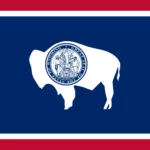Curious about Wyoming lease agreements? Wondering why they’re so important?
This comprehensive guide will explore everything you need to know about lease agreements in Wyoming.
From legal requirements to key components like rent, security deposits, and pet policies, we’ve got you covered.
We’ll also delve into the laws and regulations that govern Wyoming lease agreements, including the Wyoming Residential Landlord and Tenant Act and Fair Housing Act.
Before you sign on the dotted line, be sure to consider our tips for a smooth leasing experience.
Key Takeaways:
- A written agreement is a legal requirement for a Wyoming lease agreement, and should include identification of parties, property description, rent and payment terms, security deposit, pet policy, utilities and maintenance responsibilities, and a termination clause.
- Wyoming lease agreements are governed by the Wyoming Residential Landlord and Tenant Act, Fair Housing Act, Security Deposit Laws, and Eviction Laws. It is important for both tenants and landlords to understand these laws and regulations.
- Before signing a Wyoming lease agreement, it is essential to thoroughly understand the terms and conditions, inspect the property, clarify any questions or concerns, and negotiate terms if necessary.
What is a Wyoming Lease Agreement?
A Wyoming Lease Agreement is a legally binding contract between a landlord and a tenant that outlines the terms and conditions of renting a property in the state of Wyoming.
It serves as a crucial document that safeguards the interests of both parties by clearly defining their rights and responsibilities throughout the tenancy. By setting out specifics such as the lease duration, monthly rent amount, security deposit requirements, and maintenance responsibilities, the agreement acts as a roadmap for a harmonious landlord-tenant relationship. In Wyoming, lease agreements must comply with state laws to ensure they are enforceable and protect the interests of all involved.
Why is a Lease Agreement Important in Wyoming?
A Lease Agreement in Wyoming is crucial as it helps protect the rights of both tenants and landlords, ensuring a clear understanding of the rental terms and responsibilities.
One key aspect of a Lease Agreement is that it outlines the rent payment terms, specifying when and how much the tenant is obligated to pay. This not only provides clarity for the tenant but also safeguards the landlord’s financial interests by establishing a clear payment schedule.
The agreement typically addresses the security deposit, setting forth the conditions under which it can be withheld and returned, ensuring transparency and fair treatment for both parties involved.
What Are the Legal Requirements for a Wyoming Lease Agreement?
In Wyoming, a Lease Agreement must meet specific legal requirements to be enforceable, including provisions related to property description, rent payment terms, and security deposit regulations.
One crucial aspect of lease agreements in Wyoming is that they must be in writing to be enforceable under the law. This written document serves as a legal safeguard for both the landlord and the tenant, outlining the rights and responsibilities of each party. The lease agreement should clearly identify the parties involved, with details such as names and contact information to establish the contractual relationship.
Wyoming law imposes strict guidelines regarding security deposits. Landlords must comply with state laws on how security deposits should be handled, including the amount that can be charged, the timeframe for returning deposits, and any deductions that can be made. These regulations aim to protect tenants from unjust withholdings of their deposit.
Another essential requirement for lease agreements in Wyoming is providing an accurate and detailed description of the rental property. This description should include specific information about the premises, such as the address, square footage, condition of the property, and any included amenities. By including such details, both parties have a clear understanding of the leased property and can avoid potential disputes in the future.
Written Agreement
A written lease agreement in Wyoming is a binding contract that establishes the terms of the rental arrangement between landlords and tenants.
Having a written lease agreement is crucial in Wyoming as it provides a legal basis for the tenancy, protecting both tenants and landlords. This document clarifies the rights and responsibilities of each party, helping to prevent misunderstandings and disputes. It lays out key details such as the duration of the lease, rent amount, security deposit, maintenance responsibilities, and any specific rules or provisions agreed upon.
A well-drafted lease agreement in Wyoming ensures that both parties are aware of their obligations and rights under state laws, offering a level of security and predictability throughout the tenancy period. In case of any disagreements or violations, the written agreement serves as a crucial piece of evidence in legal proceedings, safeguarding the interests of both tenants and landlords.
Identification of Parties
The identification of parties in a Wyoming lease agreement involves specifying the landlord, tenant, and any authorized representatives involved in the rental transaction.
By clearly defining the roles of the landlord, tenant, and their representatives, the lease agreement establishes a framework that delineates responsibilities, rights, and obligations for each party involved in the property rental process. This clarity not only helps in avoiding misunderstandings but also ensures that all parties are accountable for their actions and commitments throughout the duration of the lease.
Clearly identifying the parties in the agreement facilitates effective communication between the landlord and tenant, enabling both parties to address any issues, concerns, or modifications to the lease agreement in a transparent and legally recognized manner.
Description of Property
A detailed description of the rental property in a Wyoming lease agreement includes its address, condition, amenities, and any existing damages or required repairs.
Accurately describing the rental property is critical in a lease agreement to prevent disputes between landlords and tenants. By detailing the specific address, condition, and amenities of the property, both parties have a clear understanding of what is expected. Noting any existing damages or required repairs also plays a crucial role in protecting both the landlord and the tenant. This documentation serves as a record that can be referenced at move-out to determine responsibility for damages and maintenance work.
Rent and Payment Terms
Rent and payment terms in a Wyoming lease agreement specify the monthly rental amount, due date, accepted payment methods, and any applicable late fees or penalties.
These clauses are crucial for both landlords and tenants, ensuring clear expectations and responsibilities. In Wyoming, the lease agreement typically outlines the exact dollar amount that the tenant must pay each month, along with the designated due date. Payment methods can vary, but most agreements accept checks, direct deposits, or online payments. Late fee policies are also addressed to communicate the consequences of late payments. Non-payment can lead to serious repercussions, potentially resulting in eviction proceedings as per state laws.
Security Deposit
The security deposit section of a Wyoming lease agreement outlines the amount required, conditions for deductions, and procedures for refunding the deposit at the end of the tenancy.
The security deposit clause serves as a critical element in protecting the interests of both tenants and landlords in a residential lease agreement. For tenants, it provides assurance that any damages to the property beyond normal wear and tear will be covered without additional financial burden. On the other hand, landlords rely on this clause to safeguard their property and ensure that any necessary repairs or cleaning costs can be deducted from the deposit.
The security deposit clause plays a vital role in complying with Wyoming state laws governing landlord-tenant relationships. By clearly defining the rights and obligations related to the deposit, this clause helps in preventing disputes and misunderstandings at the end of the tenancy.
Pet Policy
The pet policy in a Wyoming lease agreement specifies whether pets are allowed, any restrictions, pet deposit requirements, and potential consequences for violating the policy.
When including a pet policy in a lease agreement in Wyoming, landlords should consider the relevant legal framework laid out in the Wyo. Stat. The agreement should clearly outline the type of pets allowed, any size or breed restrictions, and whether additional fees or rent will be charged for having a pet in the rental property.
- Deposit amounts for pets should be reasonable and specified in the agreement, ensuring protection against any damages caused by the pet.
- Rules for pet ownership, such as leash laws, noise restrictions, and waste disposal requirements, should also be clearly stated to avoid any confusion or conflicts…
Utilities and Maintenance Responsibilities
The section on utilities and maintenance responsibilities in a Wyoming lease agreement clarifies which party is responsible for paying utilities, performing maintenance tasks, and handling repairs within the rental property.
Regarding utility payments, the lease agreement typically outlines whether the landlord or the tenant is responsible for electricity, water, gas, and other services. It’s essential for both parties to adhere to these terms to avoid disputes.
In terms of maintenance duties, tenants are usually required to maintain the property in good condition, which includes tasks such as lawn care, changing light bulbs, and minor repairs. Landlords, on the other hand, are responsible for major repairs and ensuring the property meets habitability standards as outlined in Wyo. Stat section.
Any disagreements related to maintenance or repair obligations may be addressed through the small claims court if parties cannot reach a resolution.
Termination Clause
The termination clause in a Wyoming lease agreement specifies the conditions under which either party can terminate the lease, including notice periods, reasons for termination, and any penalties for early termination.
Eviction is a critical component addressed within this clause, outlining the legal process by which a landlord can remove a tenant for specific violations or non-payment of rent in accordance with Wyo. Stat. § 1-21-1001. The state of Wyoming mandates that a landlord provide a tenant with a written notice of termination, typically 30 days in advance, before initiating any eviction proceedings, ensuring tenants have adequate time to address the issue or find alternative housing.
What Are the Laws and Regulations Governing Wyoming Lease Agreements?
Wyoming lease agreements are governed by specific laws and regulations, including the Wyoming Residential Landlord and Tenant Act, Fair Housing Act, and Wyoming Security Deposit Laws.
These statutes outline the rights and responsibilities of both parties to a lease agreement in Wyoming. For example, the Residential Landlord and Tenant Act sets out the rules regarding lease durations, rent payments, and tenant eviction procedures. Similarly, the Fair Housing Act prohibits discrimination based on protected characteristics such as race, color, religion, sex, national origin, disability, or familial status. The Wyoming Security Deposit Laws dictate how landlords must handle security deposits, including requirements for disputes, deductions for damages, and the return of deposits at the end of a tenancy.
Wyoming Residential Landlord and Tenant Act
The Wyoming Residential Landlord and Tenant Act establishes the rights and responsibilities of landlords and tenants in rental agreements, covering areas such as rent payments, property maintenance, and eviction procedures.
Under this law, landlords are required to provide tenants with habitable living conditions and make necessary repairs promptly. Tenants, on the other hand, must pay rent on time and maintain the property in good condition. The act also outlines procedures for handling security deposits, lease termination, and eviction processes, ensuring that both parties are aware of their legal obligations. In cases of eviction, specific requirements must be met, such as providing written notice and following due process as outlined in the law.
Fair Housing Act
The Fair Housing Act in Wyoming prohibits housing discrimination based on protected classes, ensuring that tenants have equal access to rental opportunities and fair treatment by landlords.
The Act safeguards individuals from discrimination on the basis of race, color, religion, gender, familial status, national origin, and disability.
- Tenants in Wyoming have the right to file complaints with the Wyoming Fair Housing office if they feel their rights have been violated or if they are facing unlawful practices by a landlord.
- Landlords must comply with the Act’s rules and regulations, including accommodating reasonable requests for modifications by tenants with disabilities to ensure accessibility.
Wyoming Security Deposit Laws
Wyoming Security Deposit Laws regulate how landlords can collect, hold, and return security deposits, outlining procedures for deductions, refund timelines, and disputes resolution.
Landlords in Wyoming are required by law to return a tenant’s security deposit within 30 days of the tenant’s move-out date. If the landlord intends to withhold any part of the deposit for damages caused by the tenant, they must provide a written, itemized statement detailing the deductions. Tenants have the right to contest these deductions within 15 days of receiving the statement. In cases of disputes over deposit deductions, either party can seek resolution through the Wyoming state’s small claims court or through alternative dispute resolution methods.
Wyoming Eviction Laws
Wyoming Eviction Laws specify the legal process for landlords to remove tenants from rental properties in case of lease violations, non-payment, or other breaches of the rental agreement.
When a landlord decides to proceed with eviction, they must first provide the tenant with a written notice specifying the reason for eviction and a set period to remedy the situation. Wyoming law requires a minimum notice period of three days for non-payment of rent and ten days for lease violations.
If the tenant fails to comply within the notice period, the landlord can file an eviction lawsuit with the small claims court. The court will then schedule a hearing where both parties can present their case and any evidence related to the disputes.
What Should You Consider Before Signing a Wyoming Lease Agreement?
Before signing a Wyoming Lease Agreement, tenants should consider factors such as understanding the terms, inspecting the property for damages, addressing concerns, and negotiating terms if needed.
One important aspect to remember is that tenants should thoroughly review the terms outlined in the agreement, paying particular attention to clauses related to Wyo. Stat section on property obligations and rent payments. It is equally essential for tenants to inspect the property for any existing damages, ensuring that discrepancies are documented and communicated to the landlord promptly.
Effective communication with the landlord is key during this process, as it can help clarify any uncertainties or raise concerns regarding specific clauses or provisions within the lease. Tenants also have the rights to negotiate terms that may seem unfavorable, such as rent increases or maintenance responsibilities, to ensure a fair and mutually beneficial agreement.
Understanding the Terms and Conditions
Understanding the terms and conditions of a Wyoming lease agreement is essential to ensure tenants are aware of their rights, obligations, and potential liabilities under the contract.
Wyoming has specific laws governing lease agreements, outlining the rights and responsibilities of both landlords and tenants. One crucial aspect to grasp is the security deposit regulations, which determine how the deposit should be handled, returned, or used for damages. Tenants should carefully review the lease to understand their obligations regarding maintenance, utilities, and adherence to the established rules. Failure to comply with the lease terms can lead to legal implications, including eviction or financial penalties.
Inspecting the Property
Conducting a thorough inspection of the rental property in Wyoming before signing the lease agreement is crucial to document existing damages, ensure all amenities are functional, and set the baseline condition.
Tenants in Wyoming must adhere to the state law, which requires landlords to provide a property that meets habitable standards before occupancy. During the inspection, it is essential to check for any signs of water leakage, mold, electrical issues, or structural damage. Noting these details can protect tenants from being held responsible for pre-existing damages. Inspecting amenities such as appliances, heating, and cooling systems, and plumbing fixtures is vital to ensure everything is in working order. If any maintenance concerns are identified, they should be promptly communicated to the landlord for resolution to avoid disputes in the future.
Clarifying Any Questions or Concerns
Before signing a Wyoming lease agreement, tenants should seek clarification on any uncertainties, raise concerns with the landlord, and ensure all aspects of the rental arrangement are clearly understood.
It is crucial for tenants in Wyoming to familiarize themselves with the Wyo. Stat rules governing leases to navigate smoothly through the rental process. Beyond just signing the agreement, a thorough review of the terms and conditions, including rent payment methods and maintenance responsibilities, is essential. In case of any disagreements or conflicts, having a clear communication channel with the landlord can aid in swift resolutions, upholding the tenant’s rights as enshrined in the lease.
Negotiating Terms
Tenants in Wyoming have the option to negotiate certain terms of the lease agreement, such as rent amounts, pet policies, or maintenance responsibilities, to align the contract with their needs and preferences.
When discussing rent adjustments, tenants can explore the possibility of fixed increases or decreases over a specified period to provide predictability in budgeting.
Negotiation over pet permissions may involve parameters like the number of pets allowed, size restrictions, or additional pet deposits.
Maintenance agreements can be customized to specify responsibilities for various upkeep tasks, ensuring clarity and accountability between both parties.
The Wyoming landlord tenant laws outline the permissible scope of negotiations in lease agreements, offering a framework for fair and balanced terms.
It’s crucial for tenants and landlords to communicate openly and reach mutually beneficial agreements to avoid potential disputes that could lead to eviction.
What Should You Consider Before Signing a Wyoming Lease Agreement?
Before signing a Wyoming Lease Agreement, tenants should consider factors such as understanding the terms, inspecting the property for damages, addressing concerns, and negotiating terms if needed.
When examining the terms, it is crucial to pay attention to the Wyo. Stat section that governs lease agreements in the state. This statute outlines the rights and responsibilities of both parties involved.
Conducting a thorough property inspection is essential to document any existing damages and ensure that the property is in a suitable condition. Communication with the landlord is key, as it allows tenants to address any questions or concerns regarding the lease terms or the property itself. If necessary, tenants should explore options for negotiation to reach a mutually beneficial agreement.
Dave is a seasoned real estate investor with over 12 years of experience in the industry. Specializing in single-family residential real estate, David’s strategic approach combines market analysis, financial acumen, and a deep understanding of urban development trends to maximize investment returns.










